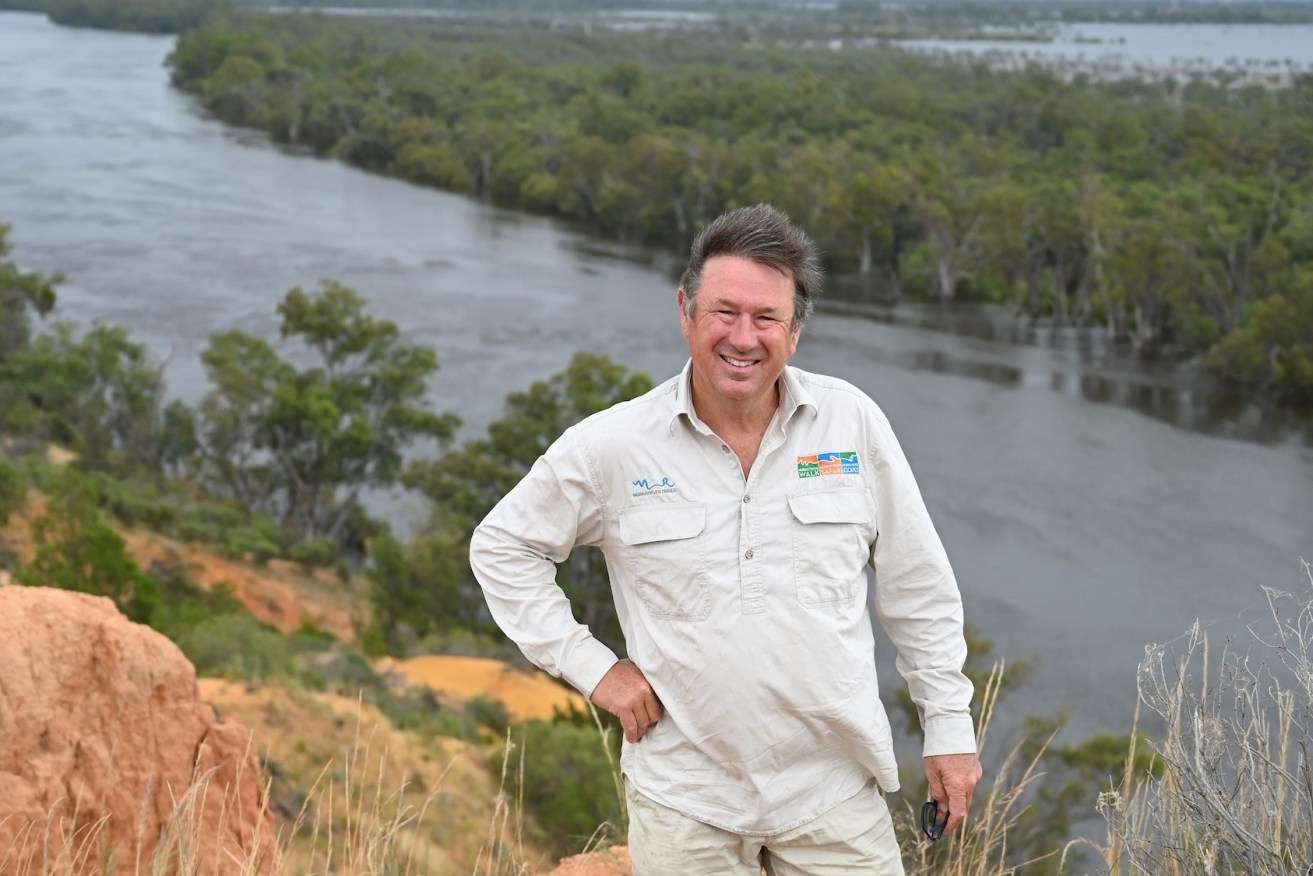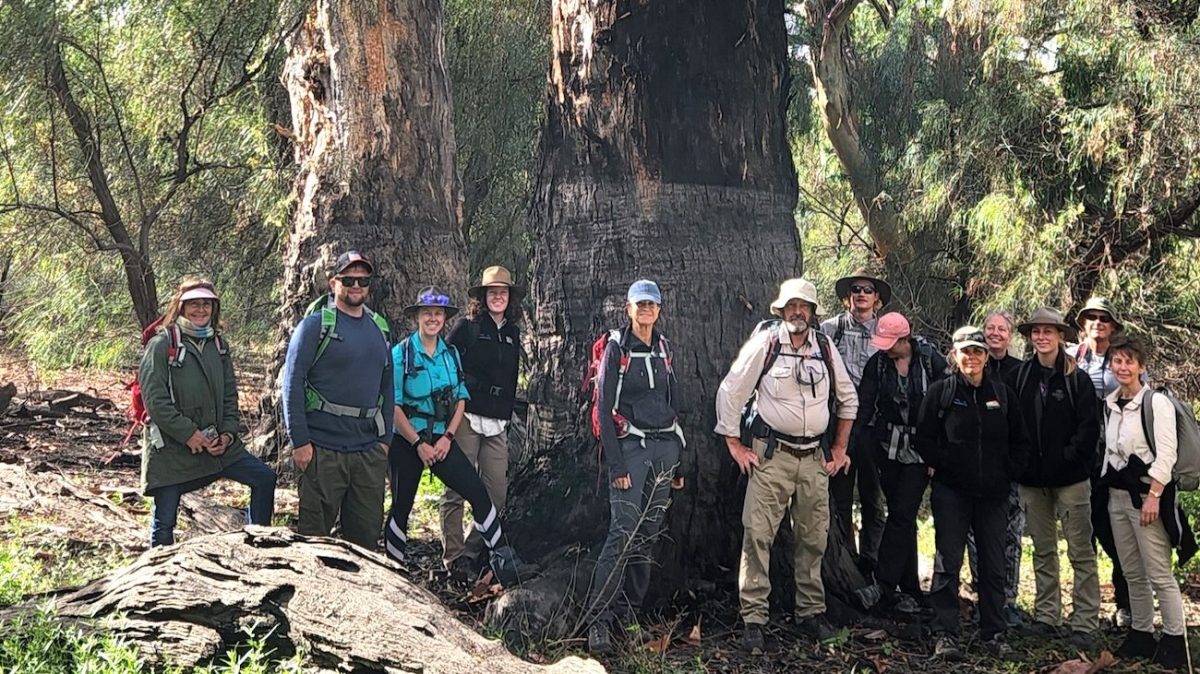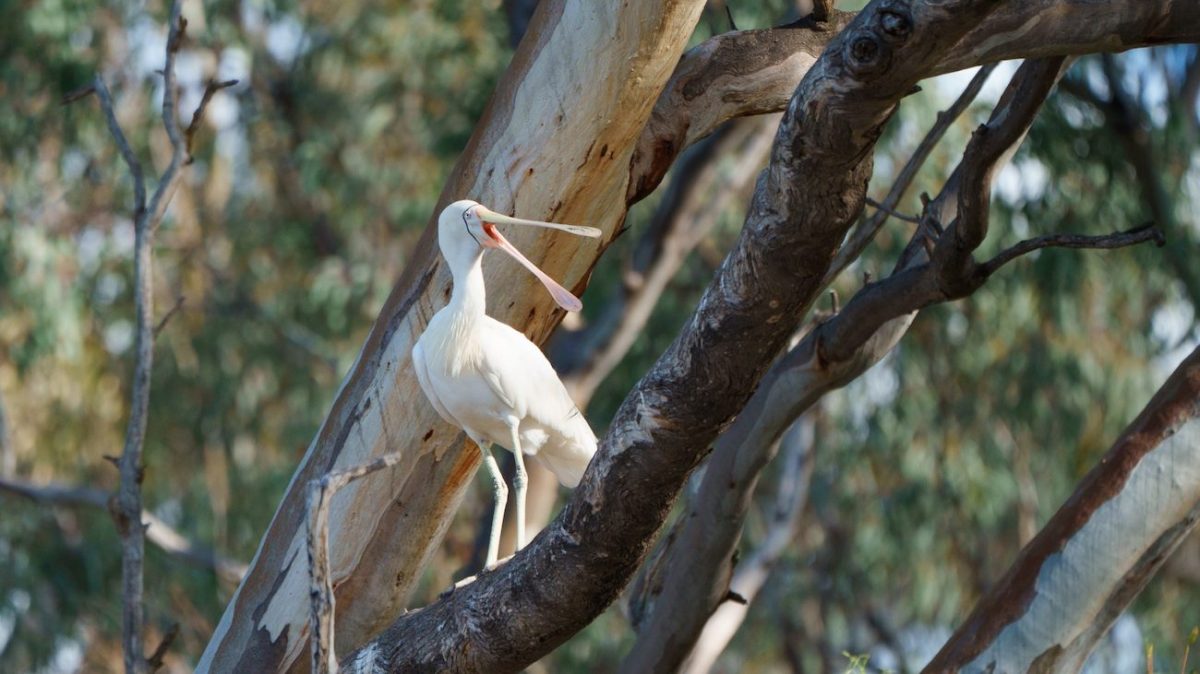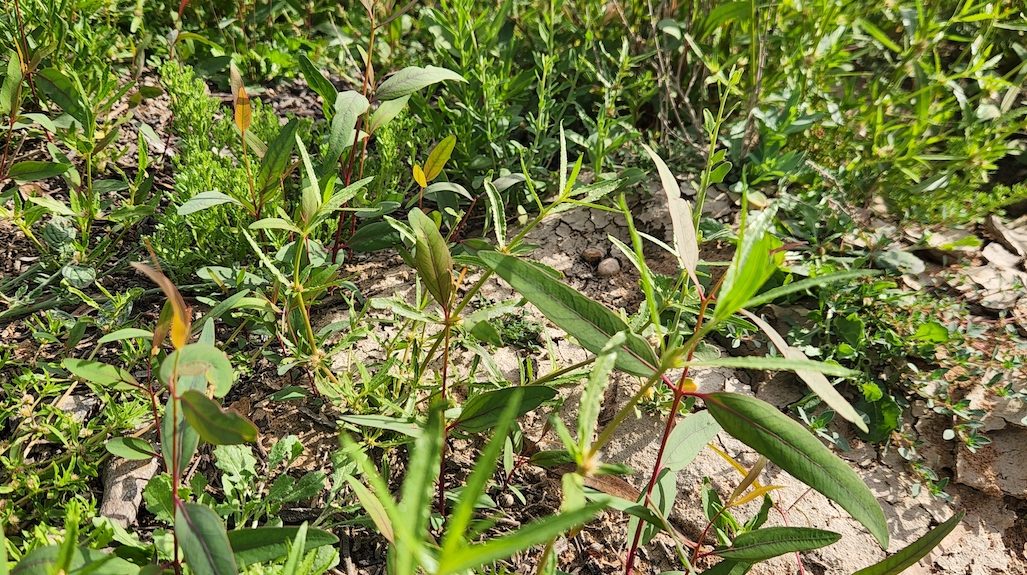The Generals mark River Murray rebirth
Tall river red gums that Tony Sharley nicknames The Generals now carry a high-water mark, the lines adding another chapter to their 600-year story that also features their silent vigil as Captain Sturt navigated the River Murray in the early 1800s.


Tony Sharley at Murtho. Photo: Belinda Willis
“Most conversations when we start our walking tours are going to start with ‘wow, look how high the water was up the tree during the floods’ because the mark is right there,” says Sharley, who runs environmental tours northeast of Renmark at Murtho.
The flood water lapping the three red gum trunks in December last year has fallen back into the river’s well-worn channel after giving those trees their first decent drink in 50 years and leaving them with a flush of green growth.
Thousands of seedlings and plants are emerging from their surrounding floodplains along with abundant wildlife plumped by plentiful food and water, some bird species adding another complete cycle to their traditional August to April breeding period.
Now is the time to see the River Murray lands at their best, according to Sharley, who is fronting the State Government tourism campaign urging visitors to travel into River Murray regions still reeling from one of the state’s most significant natural disasters.
As the clean-up of destroyed infrastructure and devastated holiday shacks continues, the local tourism industry is gradually reopening so South Australians can see how nature is responding.
Sharley, who runs the Murray River Trails tourism business, is upbeat about making winter a new tourism high season, despite taking a hit from river flooding that left a new eco houseboat spending the peak summer period safely tethered.

River Murray flood marks on red gums in the Riverland. Photo: Tony Sharley
The environmental scientist tells of opportunities to see enormous flocks of budgerigars sheltering in trees, of creamy flowers appearing on box gums, and other bird species – pied stilts, migratory greenshanks, red-necked stints and waders like yellow-billed spoonbills and white-necked herons – all breeding.
Black-tailed native hens are scurrying around the base of lignum shrubs and yabby numbers are at the highest numbers locals have seen for decades: water filling the ancient floodplains has supercharged the river system with zooplankton and phytoplankton.
“Yabbies are classic responders to high rivers: I think over the 50GL mark you are going to have a good yabby year and we went to 200GL and the yabbies just went boom,” Sharley says.
“We were out on the water a few weeks ago and we were dropping yabby nets off the side of our houseboat and you could catch as many as you wanted.”

Spoonbills are breeding in high numbers following River Murray flooding. Photo: Luke Tscharke
Today’s SA River Murray Flow Report data shows the water flow at the South Australian border is now about 28.5GL per day, a dramatic fall from its peak on December 23 last year of 190GL a day.
It was the highest flood event to hit the state since 1956 when water levels reached 341GL a day. The flows sent water spilling onto parched flood plains and helped scour open the Murray Mouth, leading to a halt in dredging for the first time in eight years.
Sharley admits to copping some stick from locals over his recent television tourism campaign appearances urging visitors to see the environmental transformation, with a few questions about “who was casting for that show?”
But it is friendly ribbing as the regions pull together to support the struggling tourism industry through a Rise Up for Our River marketing campaign and voucher program that is part of the $4.6 million river tourism recovery plan.
Before the floods in late December last year, tourism was worth a combined $436 million and directly employed 2800 people across the Riverland and Murray River lands, Lower Lakes and Coorong.
“The regions over the four months of high floods have lost millions of dollars so the whole idea is to make winter our high season and what a time to join a walk or to hire a houseboat,” Sharley says.
“I am seeing all the little plants that we see after flooding, the early colonisers, the first responders to the flood waters, some of them are up now and are flowering.
“There is blue rod with its gorgeous little blue flowers popping up everywhere, and a beautiful little plant called the lesser joyweed which is a fitting name: it’s like saying the sad, happy weed.”

River Murray regrowth on floodplains near Murtho. Photo: Tony Sharley




